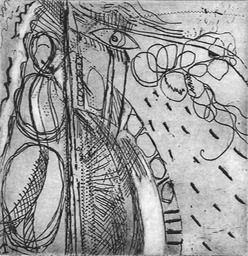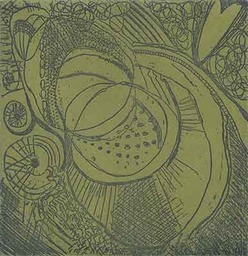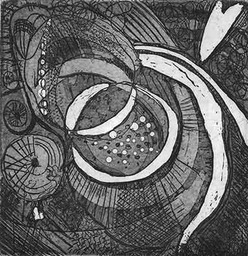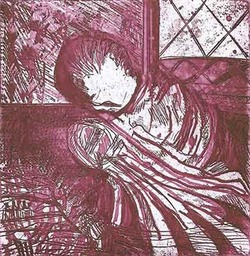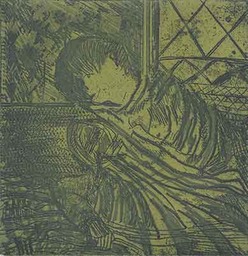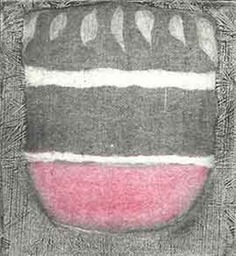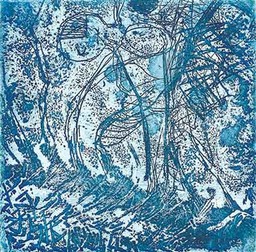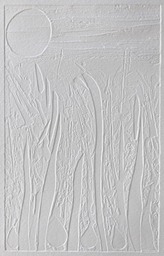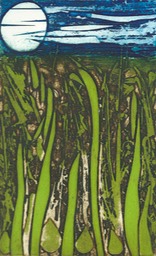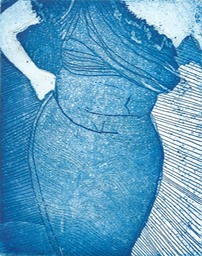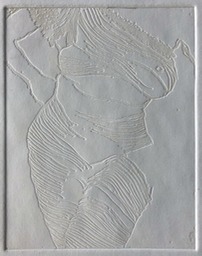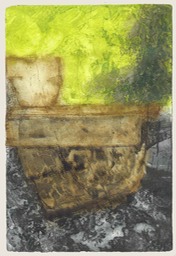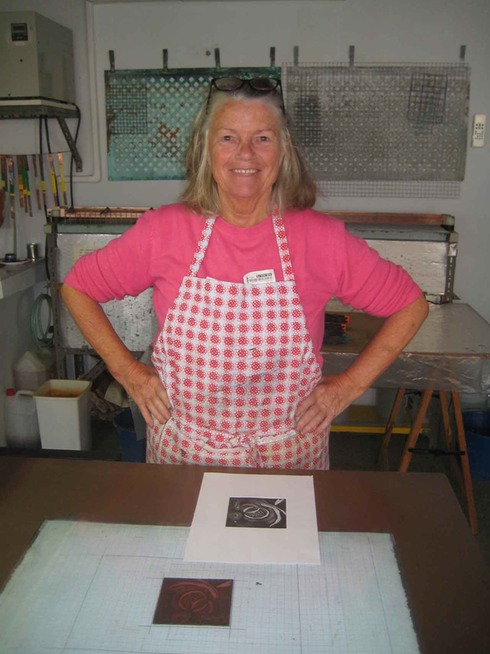
Lynda Powney, with a Master´s Degree in Education from York University and Printmaking from Bradford Art College already has experience as an art educator for teenagers and has taken numerous painting and printmaking courses. She is an artist who especially likes the mezzotinto process and has just been getting started in electrolytic etching processes over the last three weeks. Curiously, Lynda likes to work with small plates although she fills these with lots of detail.
During these three weeks she spent in the workshop, she learned how to install an electro-etching unit safely and without risk. She worked with lines on hard varnish, open bite tonal zones (electrotint), as well as lines and electrotint on graphite ink varnish and Big* etching ground, both of which offer extremely versatile results. Likewise, she practised semi-dry electro-etching. She also worked on passive electro-etching (without electricity) where the zinc plate is etched and the copper plate galvanised. In addition, she practised galvanised lines on copper plate. As she is very interested in the mezzotinto, she learned how to stipple the plates, in this case copper, using positive pole biting or corrosion and on the negative pole adding specks of metal via galvanisation.
I sincerely hope and wish that her introduction to electro-etching in this workshop will be useful in her work, and enable her to install an electrolysis unit in her studio so that she can continue experimenting with these processes.
* Big etching ground, produced by Andrew Baldwin at Trefeglwys Print Studio, Wales, UK., is one of the great advances in the line of safer grounds for printmakers and the environment, with great effectiveness and versatility.
Pictures from the workshop
Lynda Powney speaks about her experience in the workshop-residency
Arriving at Alphonso and Amparo's residence, then walking into the printmaking studio, was an experience never to be forgotten. The location is beautiful and their warmth and friendliness is contagious.
Initially, I felt rather overawed by the equipment, after all, we are taught that water and electricity do not combine! However, once the teaching began, Alphonso instilled me with confidence about the processes and I used them, under supervision and out of teaching time.
The different processes and results are fascinating.The bite is totally different to results achieved through acid etching techniques and the materials are more gentle to use, (have a lower impact on natural resources). I was particularly impressed with the Big, a replacement substance and process for aquatint, and the process for the making of potential mezzotint plates.
Leaving the residential, I feel totally competent about setting up the equipment in my own studio, abandoning painting and returning to printmaking, using a process fit for the future. Should I encounter any problems, I shall be straight back on the phone to Alphonso and a return to Gran Canaria is a big possibility.
One friend asked me whether I was doing another residential next year and my answer was yes. When they asked what I would do, I was at a loss to reply........I had just done THE BEST residential with you!
Lynda Powney's electro-etchings
